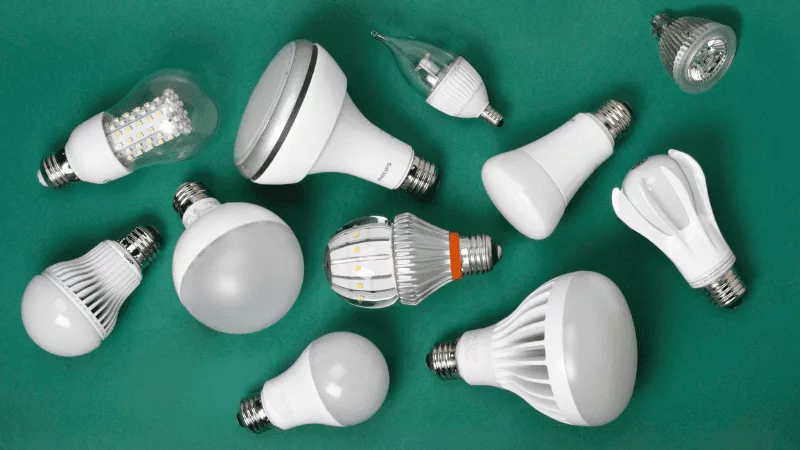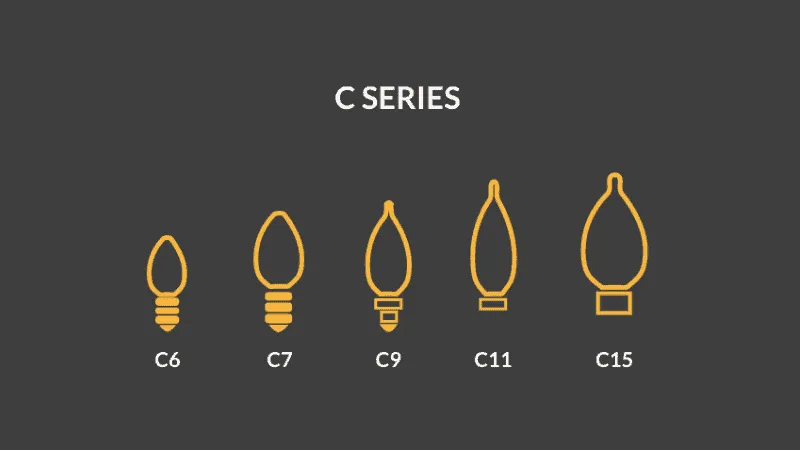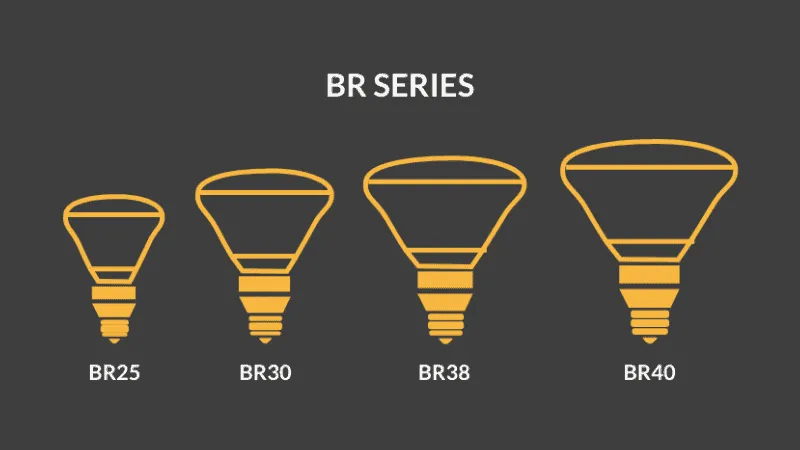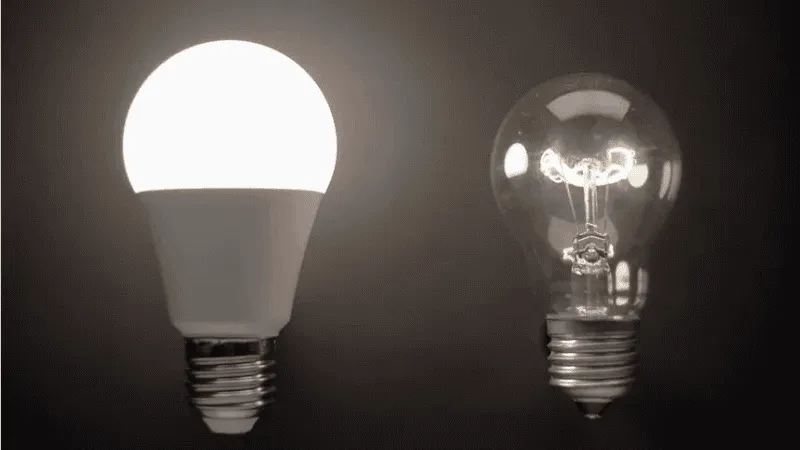If you are looking wholesale lighting solutions, click here.

Light bulbs play a significant role in both aesthetic and functional aspects.
From Thomas Edison's invention of the incandescent bulb to present-day light-emitting diodes (LEDs) and compact fluorescent lights (CFLs), this evolutionary advancement in bulb technology is always energy efficient. Apart from this evolution, changes in types, sizes, shapes, and codes can be challenging.
Understanding different types of light bulbs can enable you to make wise decisions about making your ambiance attractive and energy efficient. Every bulb has certain peculiarities, whether warm, incandescent, durable CFL or energy-efficient LED. The bulb type you choose impacts energy usage and your mood.
In this blog, we will elaborate on various types of bulb bases, their types, shapes, sizes, and more. We will also discuss key factors to consider while choosing a light bulb.
The bulb's base is a component that connects to the socket to ensure smooth electric contact. Moreover, the bulb base determines which fitting and size match the socket. Let’s explore some common sizes of bulb bases:


Light bulbs come in different shapes. This distinction in the shape of a light bulb affects not only its aesthetic appeal but also its functionality in light distribution. The following are some common bulb shapes along with their applications:

The other types include two-dimensional geometric shapes and three-dimensional geometric shapes that are commonly known as PAR and R bulbs. For light distribution, three-dimensional shapes are in the form of a sphere, triangle, cube, cone, or cylinder.
Every bulb shape has particular applications, depending upon the intensity and spread of light they give.
You can select which bulb suits your lighting needs by understanding the key differences among these shapes. Get the bulb that caters to all your needs, ensuring a captivating ambiance and optimal efficiency.
Based on technology, bulbs can be categorized into three main types: A-series, B-series, and more. Here is a comprehensive overview of light bulb base codes, their diameters, and applications.
A-Series bulbs have a characteristic pear-shaped design. They are widely applicable in commercial and residential settings. Such bulbs are labeled with the alphabet “A.” This alphabet indicates the range of the bulb’s diameter from one to eight inches.
A-series bulbs have several applications, from standard household lighting to commercial ceiling fixtures in offices and retail spaces.
Their warmth and versatile nature make them a reliable lighting choice. In particular, various technological advancements of bulbs such as incandescent, CFL, and LED are available in A-series bulbs.

Just like A-series bulbs, B-series bulbs are also pear-shaped but with a wider diameter. These bulbs are designated with the alphabet “B,” which depicts a one-eighth-inch diameter. B-series bulbs are applicable in different lighting fixtures.
Despite being similar to A-series bulbs, these bulbs are not widely used. Such bulbs offer an exclusive outlook to lighting designs in residential and commercial areas.
The most suitable application of such bulbs is in decorative fixtures, sconces, and chandeliers to provide a soft, diffused light. Moreover, these bulbs have applications in candelabra bulbs.

C-series bulbs have comparatively shorter heights and smaller diameters than A- and B-series bulbs. They are suitable for decorative lighting fixtures like wall sconces and chandeliers.
The alphabet “C” represents these bulbs, and this designation shows that the bulbs have diameters in one-eight-inch increments. For instance, a C5 bulb has a diameter of ½ inches.
The lower light output and smaller size make the C-series bulbs suitable for decorative lighting. These bulbs are most commonly used in night, string, and holiday decorations.
Due to their availability in different colors, they are perfect for adding a festive touch to any occasion, space, or event.

G-series bulbs commonly have a globe or spherical shape. They are useful in decorative lighting fixtures where the bulb is visible. The representation “G” manifests that the maximum diameter of G-series bulbs is millimeters. For example, a G25 bulb has a maximum diameter of 79mm.
The built-in versatility makes the G-group series bulbs suitable for decorative lighting fixtures, such as chandeliers, vanity, and pendant lights. These bulbs emit a soft, diffused light that is ideal for creating an aesthetic and attractive ambiance.

Bulged reflector or BR-series bulbs offer slightly wider diameters than traditional reflector bulbs. Such bulbs are commonly suitable for lighting in commercial and residential spaces.
These bulb series, represented by alphabets “BR,” showcase that the maximum diameter of the bulb is in one-eighth-inch increments. For instance, the BR30 bulb has a maximum diameter of 3.75 inches.
BR-series bulbs have a wide range of light and practical applications in general lighting in larger spaces such as offices, kitchens, and living rooms.
They are commonly useful for focused and directional light, such as in recessed lighting fixtures. In short, BR-series bulbs have become an energy-efficient lighting solution due to the advancement of LED technology.

When selecting the right light bulb for your needs, several key factors should be taken into consideration to ensure you make the best choice for your space.
The color temperature of light bulbs determines the light source’s hue, and this temperature is measured using the Kelvin (K) scale. Bulbs with warmer lights have a lower temperature, 2700 to 3000K, to give a yellowish, cozy outlook to living areas and bedrooms.
However, cooler bulb lights have higher temperatures of 5000 to 6000K, which makes this bluish-white light applicable for lighting up offices and kitchen spaces.
Another factor worth considering is the Color Rendering Index (CRI), which assesses a bulb’s capability to reproduce the colors of different objects accurately compared to a natural light source.
If the CRI of the bulb is closer to 100, it indicates that the bulb is more vibrant and ideal for installation in spaces like libraries, kitchens, and art galleries.

The lifespan of a bulb is also an essential factor to consider while picking up one. The durability of lifespan has an effect on the overall replacement and maintenance costs.
For example, LED bulbs improve the longevity of the bulbs by a time span of 25,000 hours. Such bulbs with long lifespans are suitable for continual use in hard-to-reach fixtures and commercial lighting spaces.
Energy efficiency is the light produced by a bulb per unit of energy consumption, usually measured in lumens per watt. When it comes to purchasing an energy-efficient bulb, LEDs are on the horizon. They consume 75% less energy than traditional incandescent bulbs, significantly reducing electricity costs and time.

The bulb's dimming capability is also an essential feature to pay attention to. Only a few bulbs offer dimmer compatibility, while most exhibit buzzing or flickering. Before picking a bulb, ensure it works seamlessly with existing fixtures or dimmer switches.
The compatibility of smart home technology with bulb lights is also significant. Some bulbs offer peculiar features like scheduling, remote operation, and smart system integration.
This technological advancement and compatibility make the systems more energy-efficient and convenient. So, make sure to check the compatibility of bulbs with the smart home system before purchasing one.

A19 and E26 bulbs often cause confusion due to certain similarities, but they also have some distinguished features. A19 light bulb represents the pear-shaped bulb with a 19-inch diameter.
While the E26 bulb has a 26-millimeter diameter with an Edison screw base. So, these terms are not interchangeable. Both terms describe different aspects of the bulb.
Light bulb codes are readable by breaking them into smaller parts. For instance, if you want to read a code “A19 E26 5000K,” A19 indicates the bulb size and shape, E26 means the base type of the bulb, and the last part, 5000K, shows the color temperature.
Understanding these codes allows you to evaluate which bulb suits your lighting requirements.

Light bulbs are available in different shapes, sizes, and types. Every bulb has certain uses and features. You must develop a basic understanding of the different bulb series, types, shapes, color temperatures, and other features in order to make a wise choice of bulb for your space.
With technological advancements in bulbs, lighting options are energy-efficient and customizable. These innovations and potential benefits have made bulbs perfect for lighting requirements.
So whenever you plan to replace or install a light bulb, consider different types, shapes, and sizes to select the one that suits your requirements.
Choosing a suitable light bulb can create a warm and aesthetic ambiance and bring an energy-efficient lighting solution to your space. There are unlimited options, whether for pear-shaped A and B series, BR series for general lighting, or G-series bulbs for decorative lighting.
You can pick a high-quality bulb with less maintenance cost, energy efficiency, and optimal lighting by having a basic understanding of bulbs.
At Risun, we provide premium quality and reliable lighting. Our bulbs are durable and perform well, and due to their supreme quality, they have high energy efficiency. Always keep in mind that compromising the quality of lighting is not a good idea, as it can affect your eyesight. So what are you waiting for?
Contact us today to buy the LED lights of your choice.
Comprehensive Lighting Solutions for MRO Wholesalers and Professionals
send your inquiry
Hi, I'm the author of this post, and I have been in this field for more than 15 years. If you want to wholesale lighting fixtures or lighting related product, feel free to ask me any questions.
Learn More >>Download our catalog to view all of our lighting products.
Ready to get started ?
Send Your InquiryOur team will get back to you promptly

please
download
Get notified about new products
Our team will get back to you promptly!
Add your first comment to this post